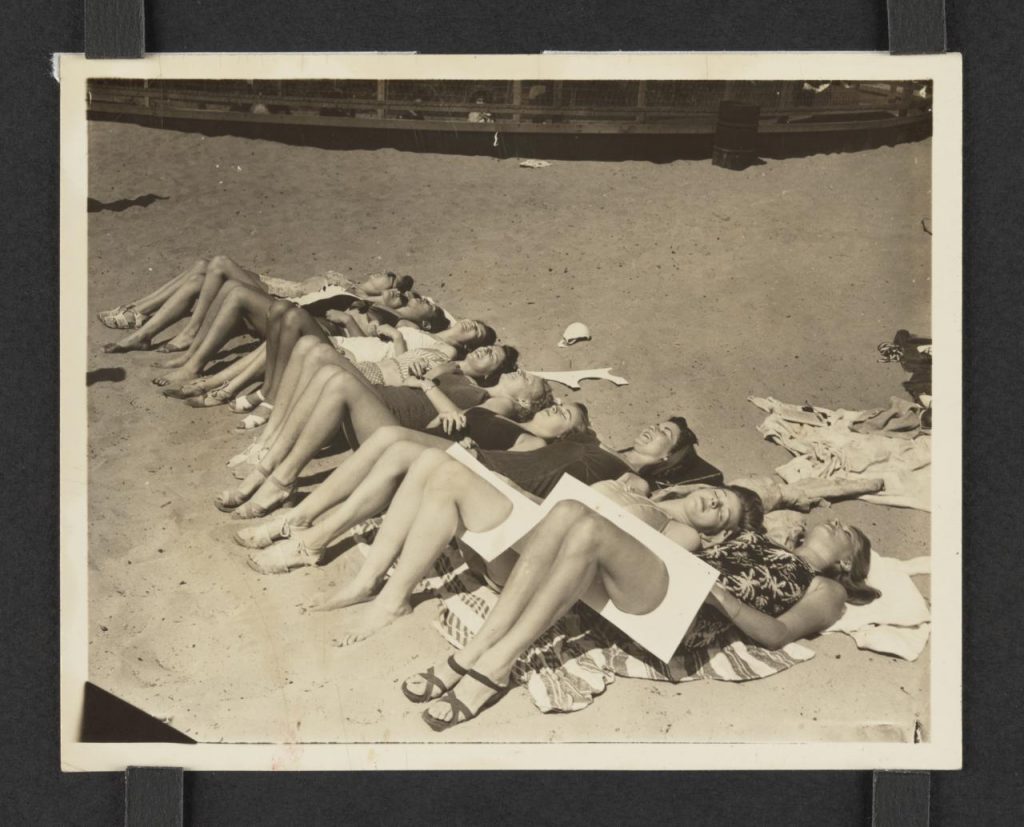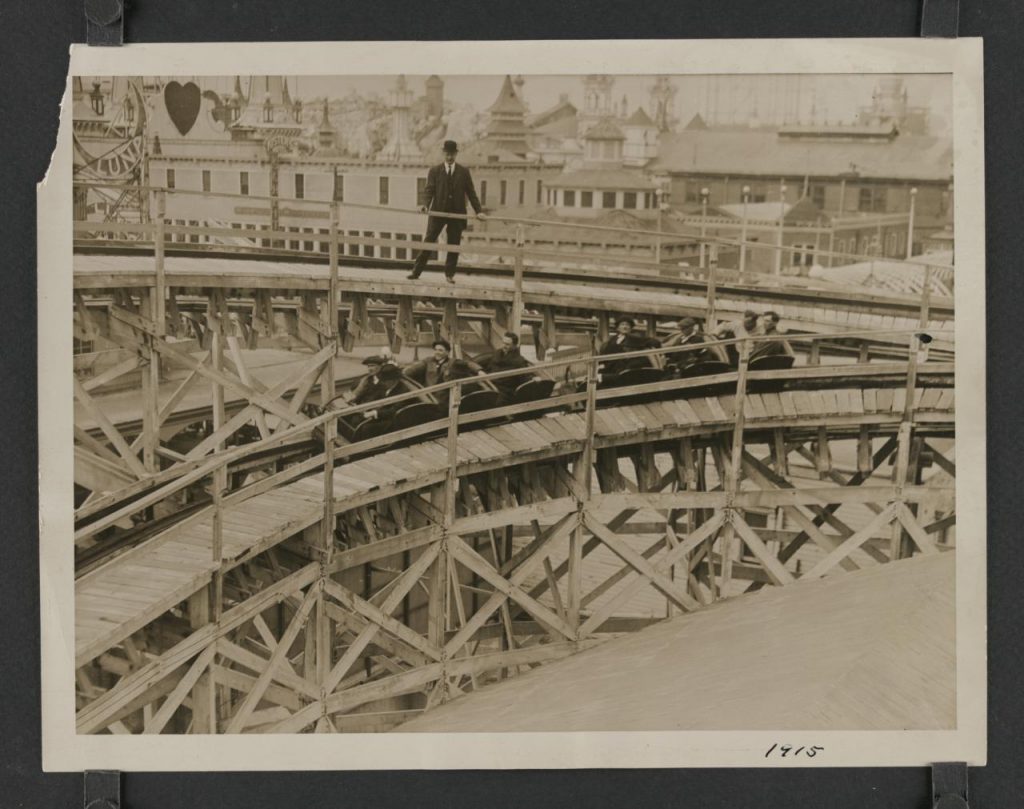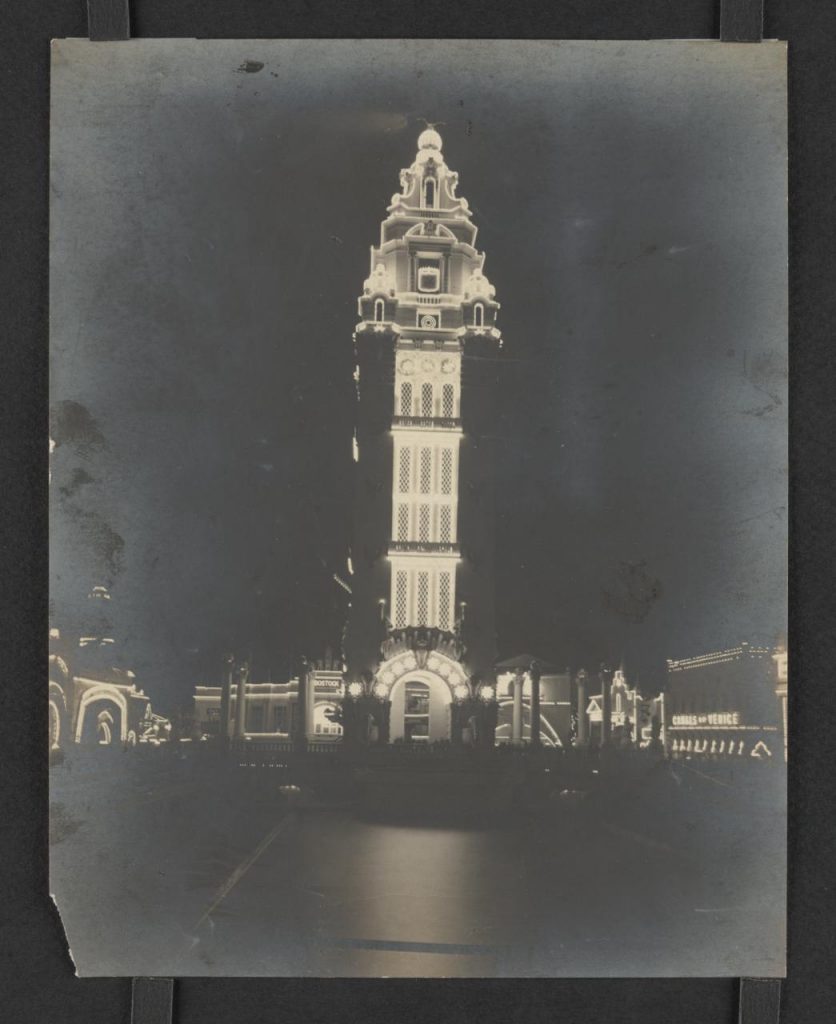The Columbia University Libraries have digitized a collection of around 500 photographs capturing Coney Island’s golden age as America’s preeminent working-class leisure destination. The images depict bathing beauties, sideshow performers, exotic animals, thrilling amusement rides, and opulent pleasure palaces, while also containing rich details about transit networks, social and cultural life, and New York City history.
The photographs in this digital collection come from the Frederick Fried Coney Island collection, 1847-2001, held in the Rare Book & Manuscript Library, Columbia University. The photographs depict the rich public life and popular culture of Coney Island from the late nineteenth to the mid-twentieth century, illustrating amusement rides; buildings and structures; parades, contests, and performances; the boardwalk; transportation; and people, both visitors to and employees of Coney Island’s various attractions, amusements, and spectacles.

“These photographs and drawings are an invaluable resource for anyone doing research on the built environment of Coney, and of the design and use of its rides and other amusements,” said Casey Blake, Professor of History, and Chair of the Learning Service Committee in American Studies. “The collection is a natural for grad students and scholars working in urban social and cultural history.”

A significant portion of this collection consists of the personal archive of William F. Mangels (1867-1958), which was purchased by Fried in 1955. Mangels was a German immigrant entrepreneur, designer, and inventor who was a major figure in the development of the American amusement park. Located at Coney Island and incorporated in 1908, the W.F. Mangels Company was a prominent manufacturer of carousels and other amusement rides, including the Whip and the Tickler. Also a historian of the amusements industry and collector, Mangels founded the American Museum of Public Recreation (1929-1955) at West Eighth Street and Neptune Avenue at Coney Island. This digital collection has numerous photographs of scale models of designs for amusements across the country by William F. Mangels, photographs of his installations at the American Museum of Public Recreation, and portraits of Mangels and his business partners.

This collection is also strong in chronicling the heyday of Coney Island’s three main amusement parks–Dreamland (1904-1911), Luna Park (1903-1944), and Steeplechase Park (1897-1964)–from 1903 to 1911. Subjects include carousels, carousel animals, demolition and fires, employees and visitors, mechanical rides, roller coasters, and recreation. There are also many photographs of the “Nickel Empire” era, circa 1920-1933, including visuals of baths and pools, beaches, restaurants and hotels, and rides.